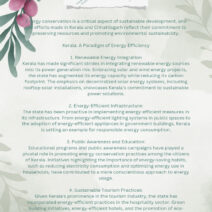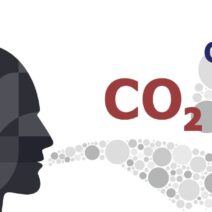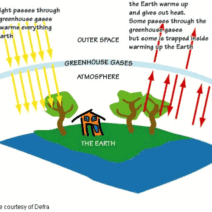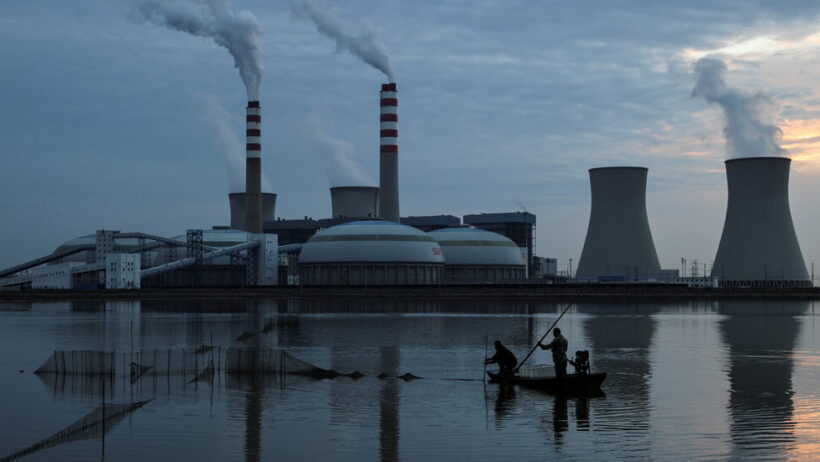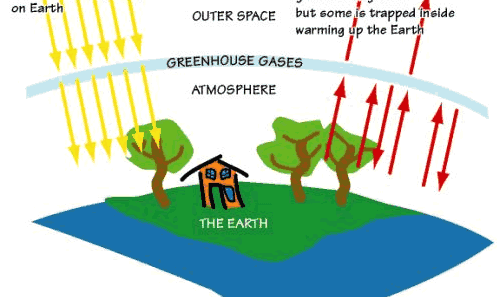Carbon emissions, predominantly in the form of carbon dioxide (CO2), are an integral factor in the phenomenon of global warming, which ultimately leads to climate change. Understanding the relationship between these emissions and global temperature fluctuations is crucial for grasping the broader implications on our planet. This examination will delve into the intricacies of carbon emissions, their sources, and the scientific mechanisms that govern global warming.
At the core of the global warming discourse is the greenhouse effect, a natural process that warms the Earth’s surface. When the Sun’s energy reaches the Earth, some of it is reflected back to space and the rest is absorbed, which warms the planet. The Earth, in turn, emits energy as infrared radiation. Greenhouse gases, including carbon dioxide, trap some of this radiation in the atmosphere, preventing it from escaping into space. This trapping of heat is akin to a blanket wrapping around the Earth, hence the term “greenhouse effect.” However, the proliferation of carbon emissions catalyzes an imbalance in this delicate system.
Human activities have significantly intensified the levels of carbon dioxide in the atmosphere since the Industrial Revolution. The burning of fossil fuels for energy—such as coal, oil, and natural gas—remains the primary contributor to CO2 emissions. These materials are embedded with carbon, which is released as CO2 when combusted. Additionally, deforestation and land-use changes exacerbate the situation by diminishing the number of trees that can absorb CO2, further amplifying the concentrations of this greenhouse gas in our atmosphere.
Scientific consensus confirms that the increase in atmospheric CO2 correlates directly to rising global temperatures. As concentrations of carbon dioxide rise, the heat captured by the Earth increases, leading to a phenomenon often referred to as enhanced greenhouse effect. This enhancement unfolds a cascade of effects that contribute to global warming, accentuating both the intensity and the frequency of climate-related disasters.
Arguably, the physical ramifications of global warming are profound. The Earth’s average temperature has risen approximately 1.2 degrees Celsius since the late 19th century, largely attributed to increased carbon emissions. This seemingly modest rise can spur devastating consequences, including rising sea levels, melting glaciers, and altered weather patterns. These changes not only jeopardize ecosystems but also threaten food security and human health.
Sea level rise is directly linked to the thermal expansion of seawater as it warms, and the melting of ice sheets and glaciers, both of which result from the ambient increase in temperature. As glaciers recede, freshwater resources dwindle, impacting drinking water and agriculture in regions dependent on glacial meltwater. This scenario presents a stark reality for communities that are already vulnerable.
Additionally, shifts in weather patterns lead to more extreme weather events, contrasting sharply with historical climatological norms. The incidence of heatwaves has surged, while precipitation patterns have become increasingly erratic. Droughts and floods have become commonplace, often within the same geographic regions. Such variances not only affect biodiversity but also strain infrastructure, leading to economic ramifications that ripple through communities and nations alike.
The environmental implications of rising carbon emissions extend further. Ocean acidification, a lesser-known yet critical consequence of elevated carbon levels, occurs when excess CO2 is absorbed by seawater. This process lowers the pH of oceans, adversely impacting marine life, especially organisms with calcium carbonate structures, such as coral reefs. The loss of coral reefs, often referred to as “the rainforests of the sea,” has profound implications for marine biodiversity and fisheries, thus endangering food sources for billions.
The solution to combating carbon emissions lies in a multi-faceted approach that calls for immediate action and systemic change. Transitioning to renewable energy sources, such as solar, wind, and hydroelectric power, is crucial. These alternatives generate energy without emitting CO2, thereby curtailing the sources of greenhouse gases. Adoption of energy-efficient technologies in residential, commercial, and industrial sectors will also play a vital role in reducing carbon footprints.
Moreover, reforestation and afforestation initiatives are essential in enhancing carbon sequestration. By increasing tree cover, we can cultivate natural systems that absorb CO2 from the atmosphere, counterbalancing emissions. Sustainable agricultural practices should also be implemented to minimize emissions from farming activities, which contribute to greenhouse gas outputs through soil management and livestock development.
International cooperation is paramount in addressing this global predicament. Mandates such as the Paris Agreement underscore the necessity of collective action to limit temperature rise and curtail carbon emissions through national pledges. Policymakers, scientists, and advocates must work together to forge pathways toward sustainability, integrating climate goals into economic frameworks.
In conclusion, the link between carbon emissions and global warming is both palpable and alarming. Understanding the science behind this relationship equips us to advocate for transformative changes to safeguard our planet. By embracing sustainable practices and advocating for policies that prioritize ecological health, we can mitigate the impacts of climate change and preserve our environment for future generations. The urgency of the matter cannot be overstated; action is not merely recommended—it is imperative. The health of the Earth reflects our choices today and those choices will define the legacy we leave for tomorrow.
